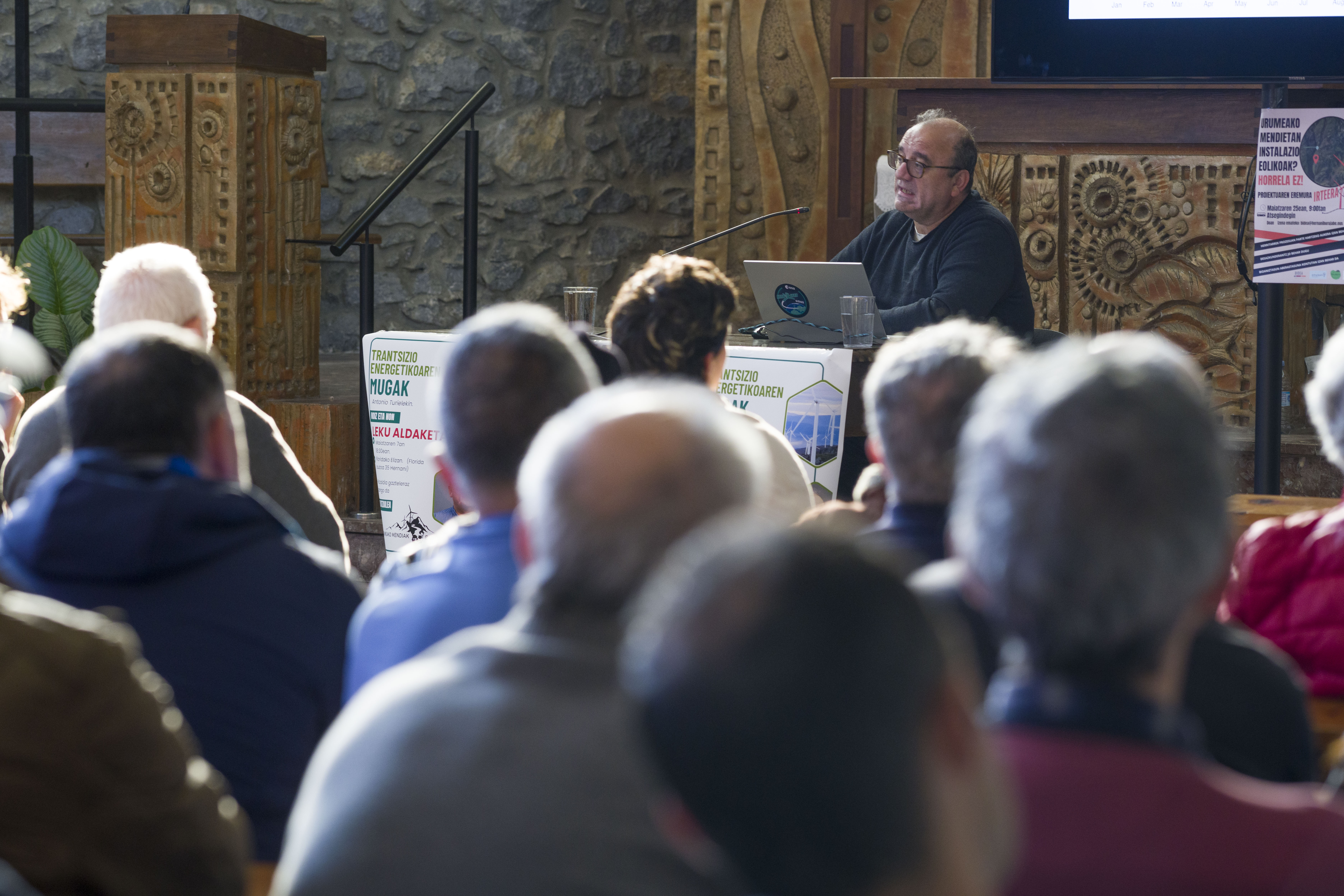40 per cent of the world ' s land is arid and 75 per cent of the land has been dried
- Following this path, by the end of the century, more than 5 billion people will live in the arid lands. This would lead to many humanitarian, economic and social problems.

Over the past 30 years, 4.3 million square kilometres of dry land have been dried in the world, according to a report published by the United Nations. The study was presented in the context of the COP16 congress. It is reflecting on the idea that some theorists have been making for a long time that the climate emergency has not only been caused by carbon emissions and global warming, but also by the loss of biodiversity and the water cycle. ARGIA journalist Urko Apaolaza said the same thing in this Next Net, to talk also about the storms of the Mediterranean basin, and referred to the Larrun supplement we published in January: Water cycle. The other key to the crazy climate.
In the last three decades the picture has turned and if it could be made more worrying, the emergency has become such. Three quarters of the world's land has been heated "more than it should", according to the UN, and arid lands have multiplied within 30 years. The amount of land the size of Canada has undergone an "apparent change", that is, some minority margins have been exceeded and the drying routes of these lands have occurred, some of which have gone from very dry to dry. Currently, with the exception of the part of Antarctica, 40 per cent of the earth ' s land is dry.
Large areas at risk of drying
Almost all of Europe is immersed in this emergency situation, which accounts for about 96% of the continent. This is practically the entire West of the United States, all of Brazil, the eastern part of Asia and the central part of Africa.
If these large areas were to follow the above trend, serious problems would arise. In Europe, especially in the Mediterranean area, farmland would suffer irreparable damage, land drought and water scarcity or heavy rains. In South America, water scarcity would also be serious, but the authors of the study point out that forest fires are "especially worrisome". In Africa and Asia, for their part, they have highlighted the degradation and desertification of ecosystems, as there would be many species of animals and plants that would disappear.
The authors of the study are: "When the climate of an area becomes drier, the ability to return to the above conditions is lost. Now, the driest climates that affect vast lands around the world won't come back to what they were, and this change is redefining life on earth."
Damage to lifestyle
The climate emergency will cause and cause serious damage to daily life, customs or quality itself. Damage to the ecosystem would cause damage to access to water, a strain on cultivation and all this would fundamentally affect health. This trend to the question of biodiversity would increase poverty in Africa and Asia: according to the report, by 2030 there would be between 35 and 122 million more people in extreme situations.
In addition, the study notes that species habitat can be reduced by 55 per cent due to water scarcity and the collapse of agriculture.
Klima aldaketaren eraginez, munduko lurralde gero eta gehiago idortzen ari dira, milioika pertsonaren jarduera eta bizimoduak kolokan ezarririk. Fenomeno horren frontean dago India erdialdeko Maharashtra estatua, non klimaren berotzeari eta lehortzeari metatu zaizkien oihan... [+]
Today’s Venice is built on an archipelago of 118 islands. These islands are connected by 455 bridges. The city is based on mud rather than Lura. Millions of trees in the area were cut down from the 9th century onwards to build piles and cement the city. Years have passed and... [+]
Lurrak guri zuhaitzak eman, eta guk lurrari egurra. Egungo bizimoldea bideraezina dela ikusita, Suitzako Alderdi Berdearen gazte adarrak galdeketara deitu ditu herritarrak, “garapen” ekonomikoa planetaren mugen gainetik jarri ala ez erabakitzeko. Izan ere, mundu... [+]
Eskola inguruko natur guneak aztertu dituzte Hernaniko Lehen Hezkuntzako bost ikastetxeetako ikasleek. Helburua, bikoitza: klima larrialdiari aurre egiteko eremu horiek identifikatu eta kontserbatzea batetik, eta hezkuntzarako erabiltzea, bestetik. Eskola bakoitzak natur eremu... [+]
Agintari gutxik aitortzen dute publikoki, disimulurik eta konplexurik gabe, multinazional kutsatzaileen alde daudela. Nahiago izaten dute enpresa horien aurpegi berdea babestu, “planetaren alde” lan egiten ari direla harro azpimarratu, eta kutsadura eta marroiz... [+]
Biologian doktorea, CESIC Zientzia Ikerketen Kontseilu Nagusiko ikerlaria eta Madrilgo Rey Juan Carlos unibertsitateko irakaslea, Fernando Valladares (Mar del Plata, 1965) klima aldaketa eta ingurumen gaietan Espainiako Estatuko ahots kritiko ezagunenetako bat da. Urteak... [+]
Nola azaldu 10-12 urteko ikasleei bioaniztasunaren galerak eta klima aldaketaren ondorioek duten larritasuna, “ez dago ezer egiterik” ideia alboratu eta planetaren alde elkarrekin zer egin dezakegun gogoetatzeko? Fernando Valladares biologoak hainbat gako eman dizkie... [+]
Eskoziako Lur Garaietara otsoak itzularazteak basoak bere onera ekartzen lagunduko lukeela adierazi dute Leeds unibertsitateko ikertzaileek.. Horrek, era berean, klima-larrialdiari aurre egiteko balioko lukeela baieztatu dute, basoek atmosferako karbono-dioxidoa xurgatuko... [+]



















_Glaciar.png)